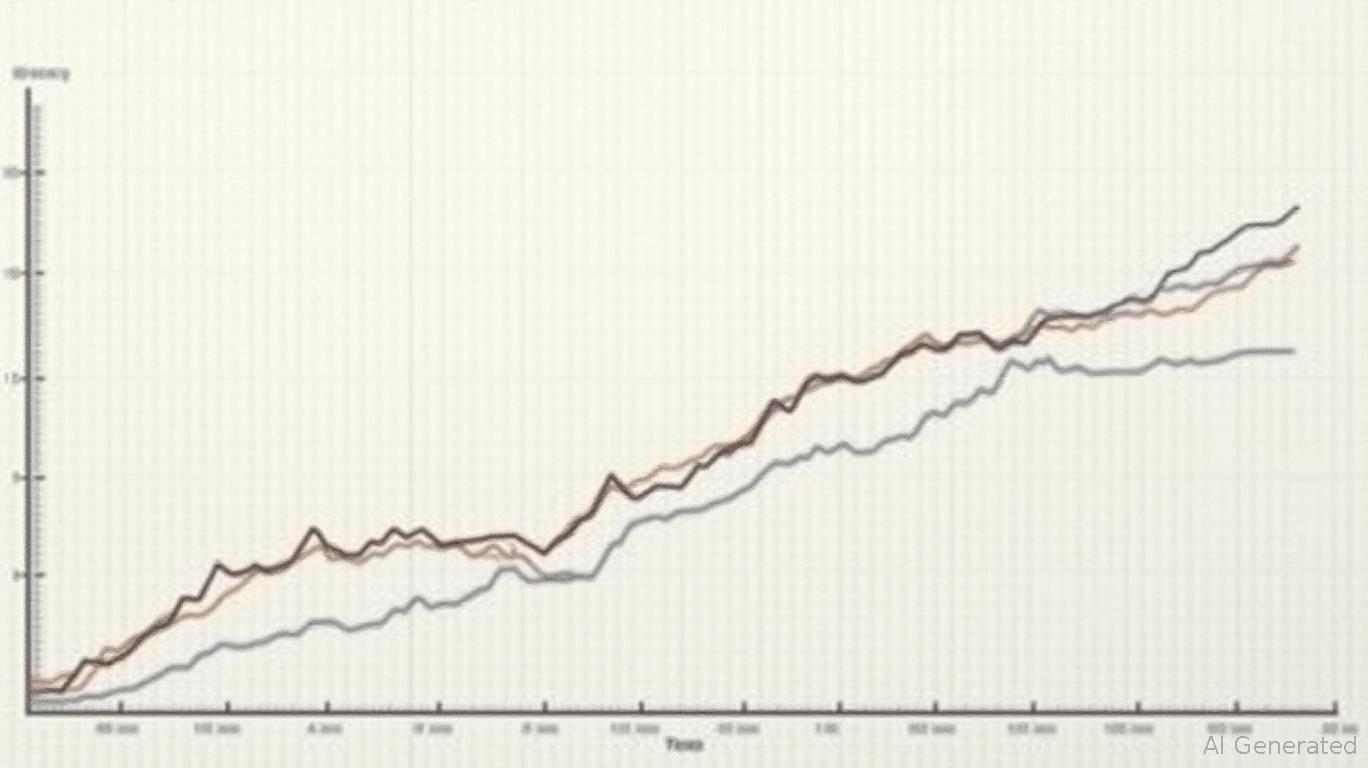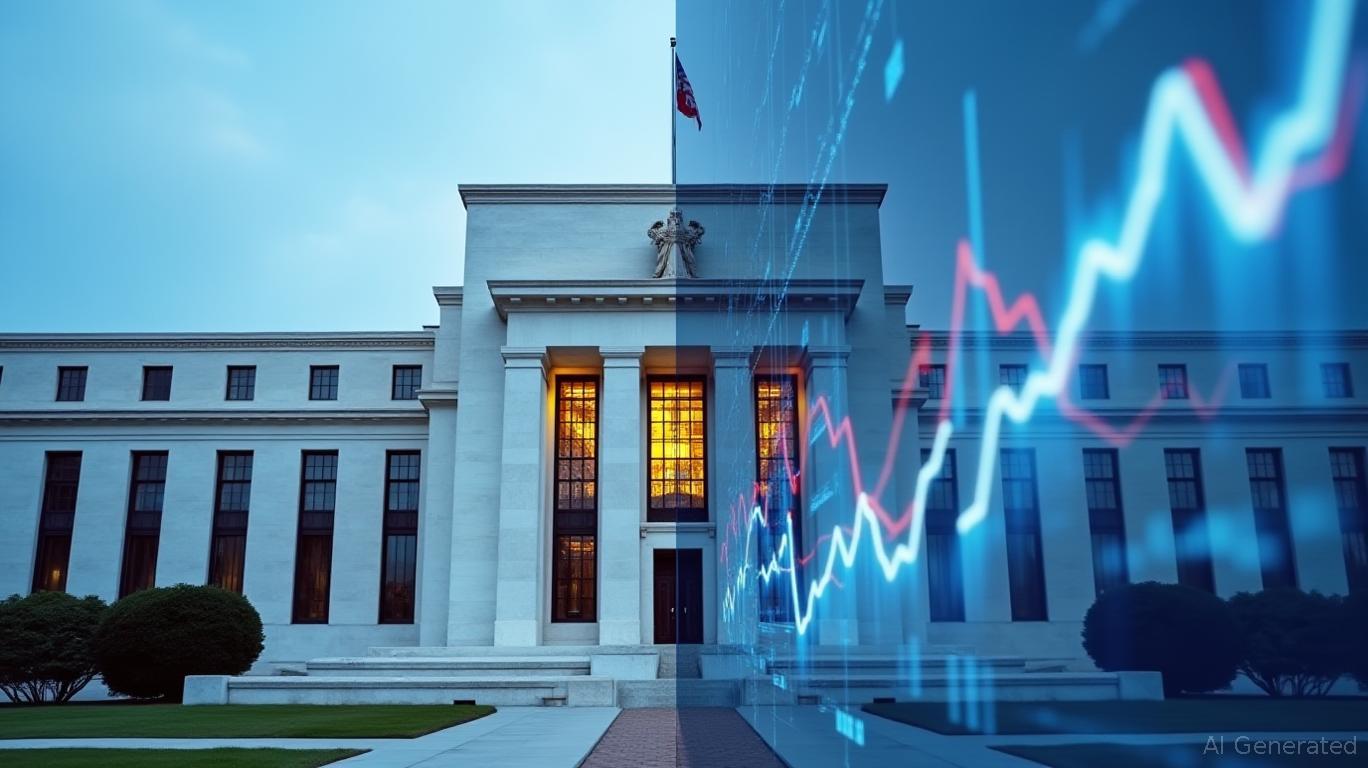Navigating the Fed's Crossroads: Positioning Portfolios for Rate Cuts Amid Inflation and Tariff Uncertainty
The April 2025 PCE inflation report's drop to 2.1% year-over-year has lit a fuse under market expectations for a Federal Reserve rate cut—a catalyst for investors to rethink their portfolios. Yet, lurking beneath this positive signal is a volatile wildcard: tariff-driven inflation risks that could upend the Fed's path. With the central bank caught between political pressure to ease and the specter of trade-war-fueled price spikes, this is a moment to position aggressively for rate cuts while hedging against supply-chain chaos. Let's dissect the opportunities and risks—and how to capitalize on them.
The Catalyst: PCE Inflation Drops, Fed Rate Cut Odds Rise
The April PCE report's 0.1% month-over-month rise and 2.1% headline annual rate mark the closest inflation has come to the Fed's 2% target in years. This decline, driven by falling gasoline prices and easing shelter costs, has market-implied odds of a July rate cut at 25% and a September cut at 50%.

Why this matters: The Fed's dual mandate of price stability and maximum employment is now tilted toward easing. Even Fed Chair Powell's caution about tariff impacts hasn't dimmed the market's focus on the “Fed put”—the belief the central bank will cut rates to offset economic drag.
The Tariff Wild Card: Why Inflation Could Rebound
While the PCE data is bullish for rate cuts, the Fed's calculus is clouded by trade policy uncertainty. The April report itself noted that tariff-driven shocks—like the 25% tariffs on Chinese goods announced in April 2025—are尚未 fully reflected in inflation metrics.
The risk: A Goldman Sachs analysis warns that tariffs could push core PCE inflation back to 3.6% by year-end, reversing recent gains. Historical parallels reinforce this fear:
- During the 2018–2025 U.S.-China trade war, tariffs on intermediate goods (e.g., semiconductors) added 0.3 percentage points to CPI annually due to supply-chain disruptions.
- Final goods tariffs (e.g., consumer electronics) caused immediate but shorter-lived spikes—0.5 percentage points in the first year—before supply chains rerouted, often at higher costs.
The result? Persistent inflation from productivity losses as firms scramble for costlier inputs.
Sector Strategies: Overweight Rate-Sensitive Plays, Underweight Trade Exposure
To navigate this crosswind, portfolios must balance two forces: the Fed's easing bias and tariff-driven volatility. Here's how to position:
Overweight Rate-Sensitive Sectors
- Utilities: Low-rate environments are a tailwind for regulated utilities, which benefit from falling borrowing costs. The sector's beta to rate cuts has historically been +0.8, outperforming during easing cycles.
- Real Estate (REITs): Falling rates reduce refinancing costs and boost property demand. The National Association of Realtors projects a 15% rebound in home sales if rates drop to 4.5% by year-end.
Underweight Trade-Exposed Equities
- Global Industrial Conglomerates: Firms reliant on U.S.-China supply chains (e.g., Boeing, Caterpillar) face margin pressure as tariffs force costlier sourcing.
- Auto Manufacturers: Tariff-driven import costs have already hiked prices for European luxury brands like Jaguar Land Rover by 12–15% in 2025.
The Fed's Playbook: Waiting for Clarity, but Markets Won't
The Fed's stated preference to “wait for clarity” on tariffs won't stop traders from pricing in rate cuts. Here's why:
- Powell's independence battle: With the White House pushing for cuts, the Fed risks losing credibility if it delays too long. Historical data from Alesina and Summers shows central banks with political interference have higher long-term inflation.
- Market discipline: Bond yields have already priced in a cut by September. The 2-year Treasury yield's drop to 3.8% from 4.2% in Q1 signals investors are ahead of the curve.
Conclusion: Act Now—Rate Cuts Are Coming, but Tariffs Stay Dangerous
Investors face a “best of both worlds” scenario: the Fed's likely easing cycle creates buying opportunities in rate-sensitive sectors, while tariff volatility demands caution in trade-exposed stocks.
The call to action:
- Overweight utilities and REITs now—these sectors have historically outperformed in the 6–12 months following Fed rate cuts.
- Underweight industrials and autos until trade negotiations stabilize.
- Monitor tariff developments: A Biden administration “tariff rollback” could be the final trigger for a September cut—but don't wait; position now.
The Fed's crossroads is an investor's crossroads too. Move decisively—or risk being left behind in the next leg of the market's rotation.


Comments
No comments yet